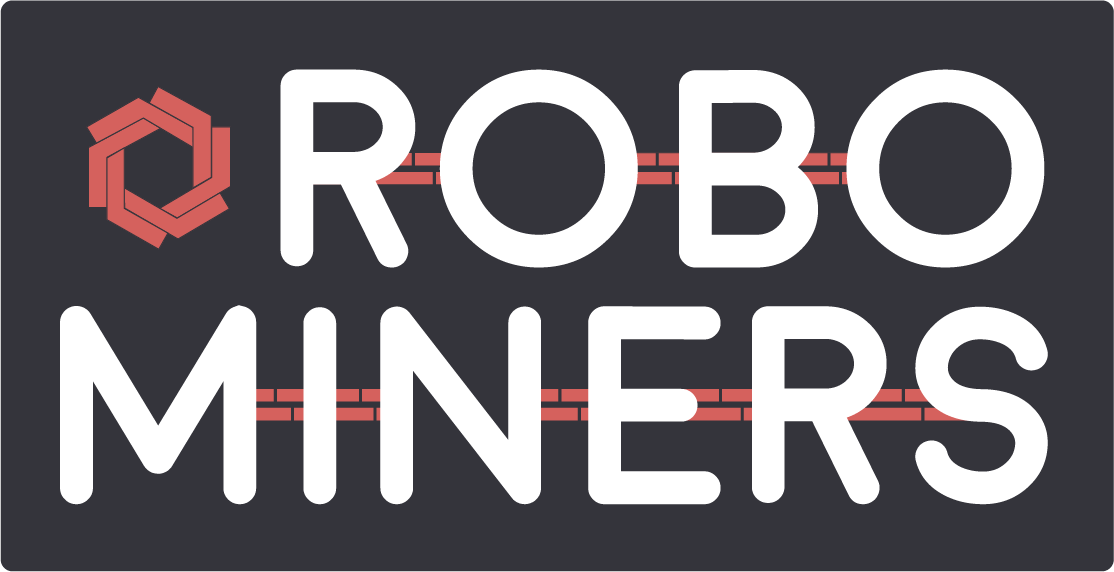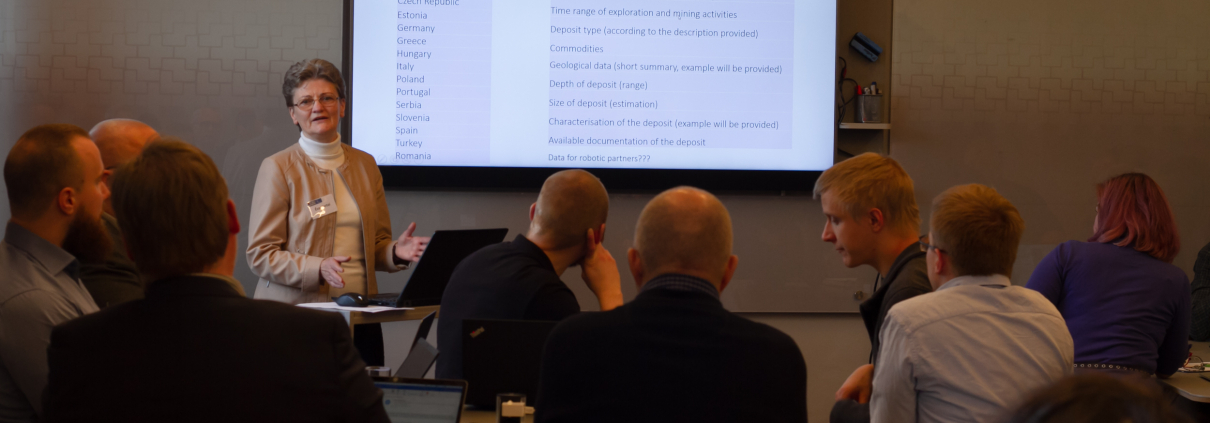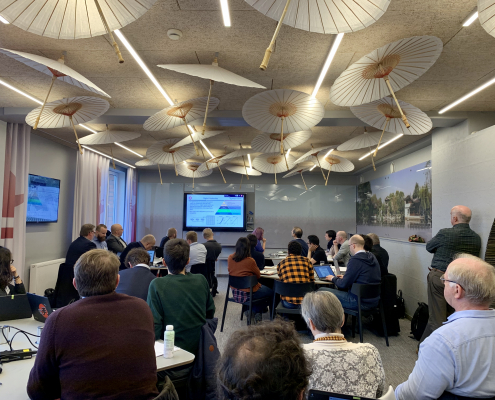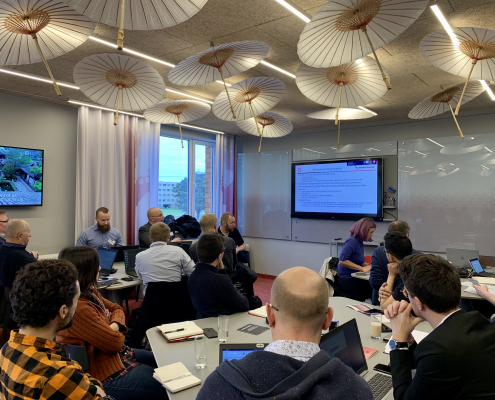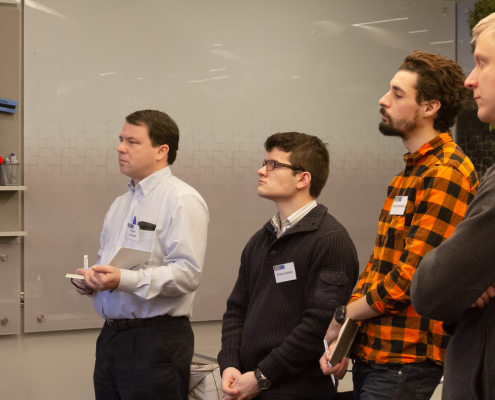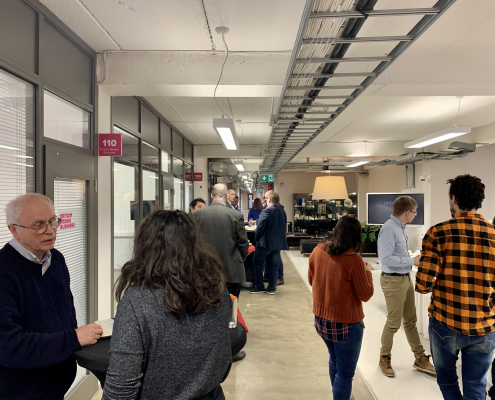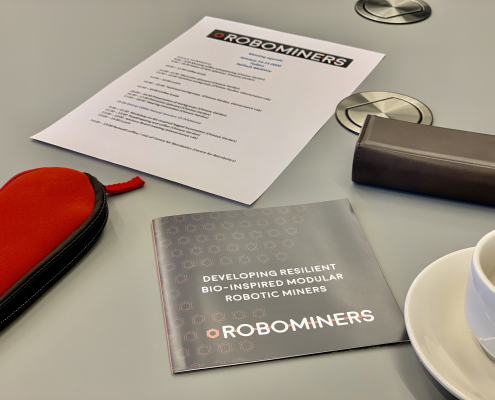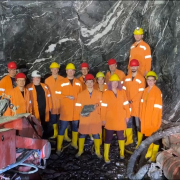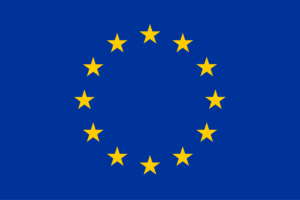On 14 and 15 January 2020, the partners of the EU-funded ROBOMINERS project gathered in Tallinn, Estonia, to discuss the current state of work and define potential scenarios for the robot miner design and application, taking into consideration both economic and political factors such as the need for certain commodities or their criticality in the EU. By developing a bio-inspired robot for mining deposits that are small or difficult to access, ROBOMINERS aims at facilitating EU access to mineral raw materials – including those that are considered as strategic or critical for the energy transition – from domestic resources, and thus decreasing the European import dependency.
The first day, the partners updated each other about the progress of their investigations with a focus on the locomotion of the bio-inspired robot, the future miner’s design and the robot platform’s software. Some of the key aspects involved the robot’s water hydraulics, artificial muscles, pressure compensation, the cutter head system and the power system. Towards the end of the project, ROBOMINERS aims indeed at presenting a full-scale prototype which will demonstrate the mining process.
The experts from the robotics community also presented their draft concept for the robot, whereas the geology and mining experts came up with a preliminary selection of mineral deposit types and scenarios appropriate for the ROBOMINERS technology. Based on a genetic classification of ore types, participants ranked deposits according to the most relevant aspects such as geometry, rock mechanics, stability, extractability and economics. The partners listed different scenarios as well as potential test sites. These scenarios involve ultra-deep deposits; small, non-economic deposits with a minimum surface footprint; hazardous or not accessible environments; and abandoned mines or non-economic parts of operating mines. The final classification of the scenarios and deposit types is expected to be available in spring 2020.
On 15 January, the consortium meeting continued with a workshop on bio-inspired legged locomotion where robotic experts from TalTech University and the Universidad Politécnica de Madrid (UPM) shared highlights of their current research considered as relevant for the development of the robot miner. This included the presentation of different bio-inspired robotic concepts and various legged robots and their technical complexity by the TalTech team. Specialists from UPM presented a modular climber robot planned to be used for infrastructure inspections which has a variable number of legs and can reassemble its modules autonomously. The workshop concluded with a presentation by ROBOMINERS coordinator Claudio Rossi on energy efficient legged locomotion.
This highly technical session was followed by an Advisory Board meeting involving external experts from the mining industry, and an interactive roadmapping workshop led by La Palma Research Centre for Future Studies (LPRC). The participants discussed the 2030 and 2050 horizon for ROBOMINERS in close alignment with the EU policy vision. The input received will be used for further foresight exercises. The meeting concluded with a guided visit at the Centre for Biorobotics of TalTech University.
